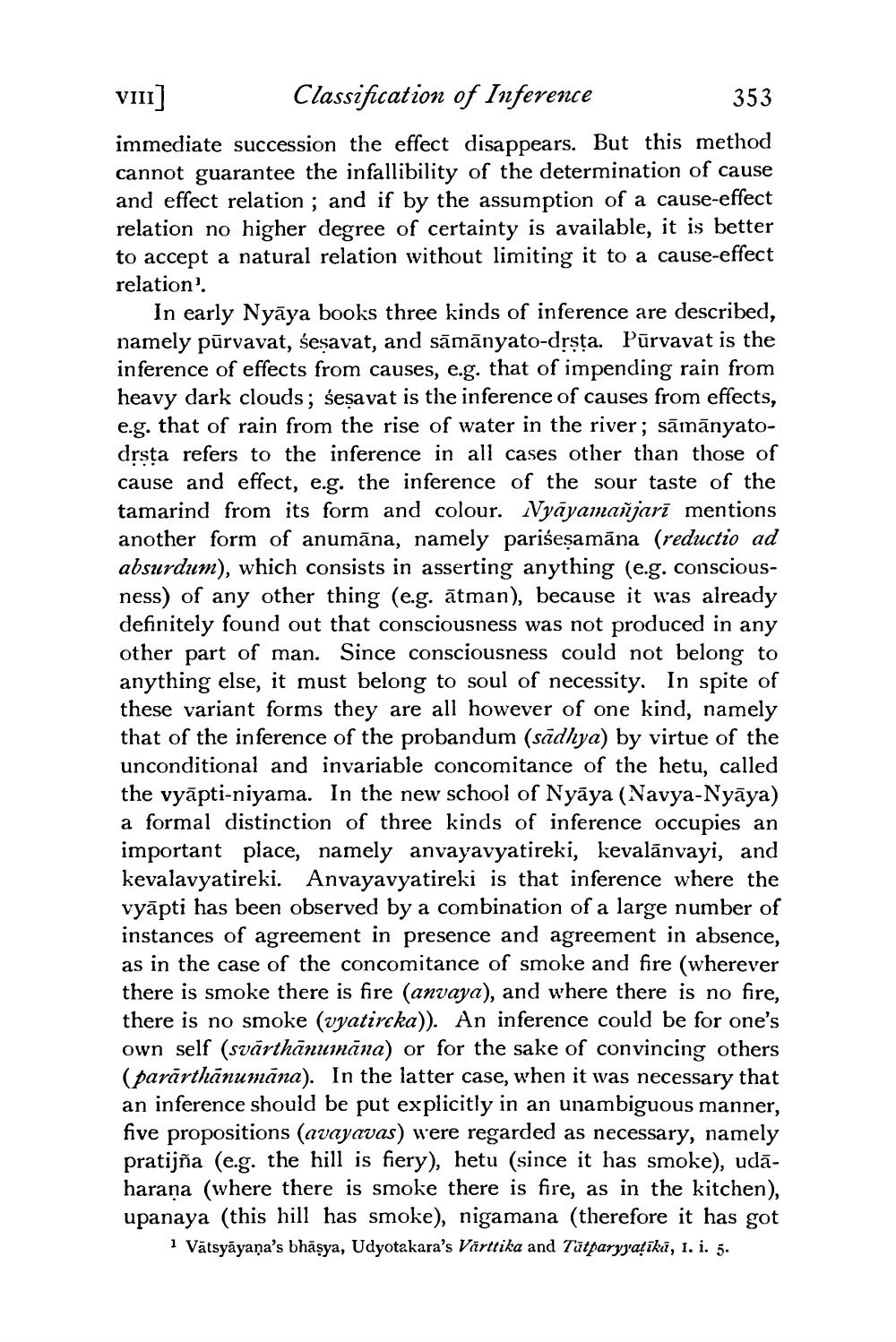________________
V11]
Classification of Inference
353
immediate succession the effect disappears. But this method cannot guarantee the infallibility of the determination of cause and effect relation ; and if by the assumption of a cause-effect relation no higher degree of certainty is available, it is better to accept a natural relation without limiting it to a cause-effect relation!
In early Nyāya books three kinds of inference are described, namely pūrvavat, sesavat, and sāmānyato-drsta. Pūrvavat is the inference of effects from causes, e.g. that of impending rain from heavy dark clouds; sesavat is the inference of causes from effects, e.g. that of rain from the rise of water in the river; sāınānyatodrsta refers to the inference in all cases other than those of cause and effect, e.g. the inference of the sour taste of the tamarind from its form and colour. Nyāyamañjari mentions another form of anumāna, namely parisesamāna (reductio ad absurdum), which consists in asserting anything (e.g. consciousness) of any other thing (e.g. ātman), because it was already definitely found out that consciousness was not produced in any other part of man. Since consciousness could not belong to anything else, it must belong to soul of necessity. In spite of these variant forms they are all however of one kind, namely that of the inference of the probandum (sādhya) by virtue of the unconditional and invariable concomitance of the hetu, called the vyāpti-niyama. In the new school of Nyāya (Navya-Nyāya) a formal distinction of three kinds of inference occupies an important place, namely anvayavyatireki, kevalānvayi, and kevalavyatireki. Anvayavyatireki is that inference where the vyāpti has been observed by a combination of a large number of instances of agreement in presence and agreement in absence, as in the case of the concomitance of smoke and fire (wherever there is smoke there is fire (anvaya), and where there is no fire, there is no smoke (vyatircka)). An inference could be for one's own self (svārthānuināna) or for the sake of convincing others (pararthānumāna). In the latter case, when it was necessary that an inference should be put explicitly in an unambiguous manner, five propositions (avayavas) were regarded as necessary, namely pratijña (e.g. the hill is fiery), hetu (since it has smoke), udāharana (where there is smoke there is fire, as in the kitchen), upanaya (this hill has smoke), nigamana (therefore it has got
i Vātsyāyana's bhāsya, Udyotakara's Vārttika and Tutparypațīkı, 1. i. 5.




